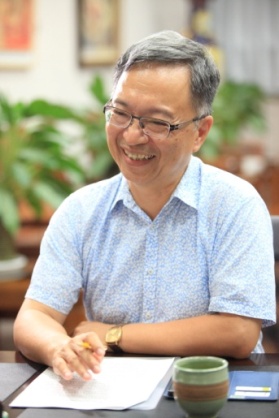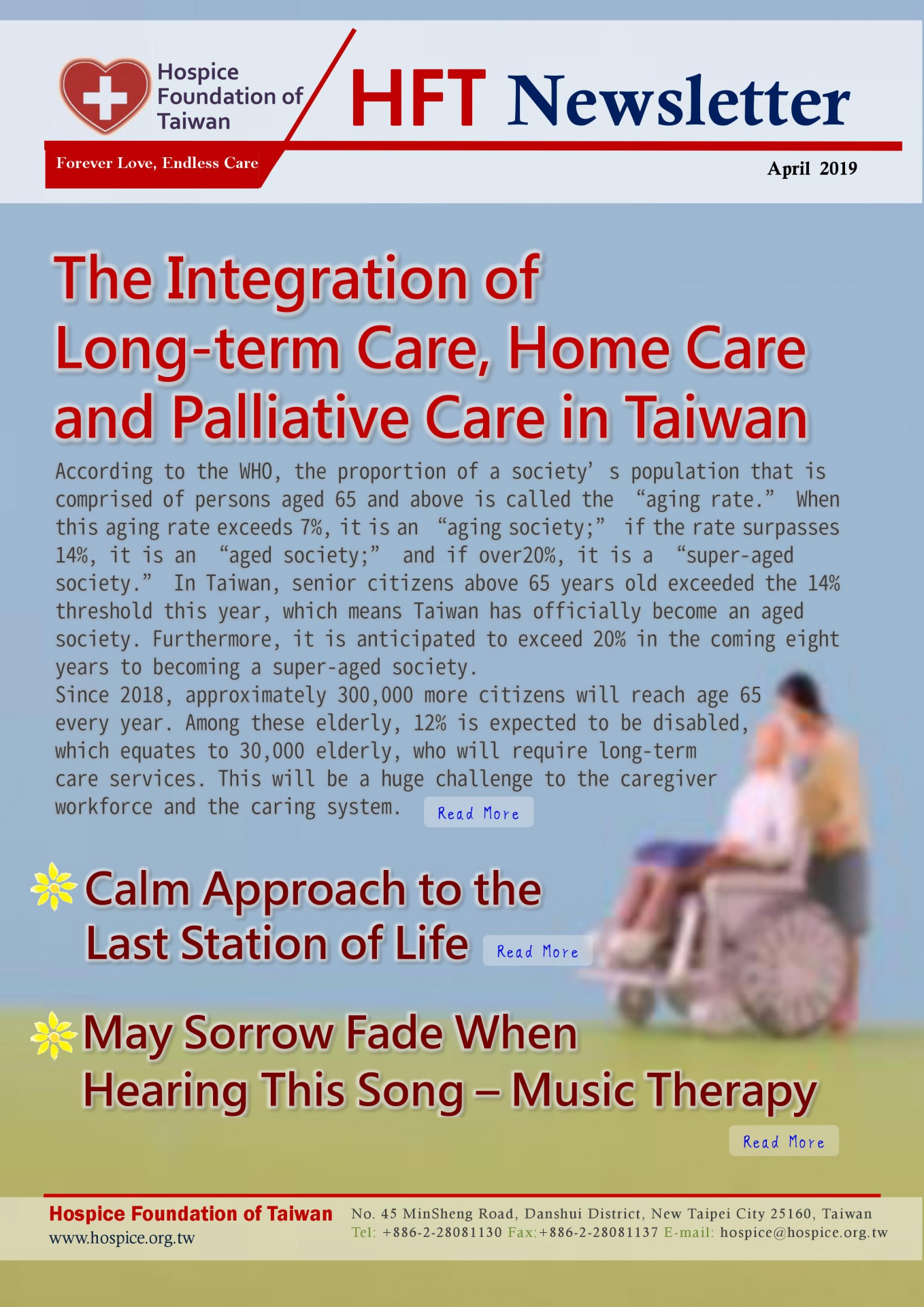
Background
According to the WHO, the proportion of a society’s population that is comprised of persons aged 65 and above is called the “aging rate.” When this aging rate exceeds 7%, it is an “aging society;” if the rate surpasses 14%, it is an “aged society;” and if over20%, it is a “super-aged society.” In Taiwan, senior citizens above 65 years old exceeded the 14% threshold this year, which means Taiwan has officially become an aged society. Furthermore, it is anticipated to exceed 20% in the coming eight years to becoming a super-aged society.
Since 2018, approximately 300,000 more citizens will reach age 65 every year. Among these elderly, 12% is expected to be disabled, which equates to 30,000 elderly, who will require long-term care services. This will be a huge challenge to the caregiver workforce and the caring system.
It is predicted that in 2030, citizens above 65 years old will increase to 2.16 million while, at the same time, the number of workforce and newborns will decrease to 1.96 million and 0.37 million, respectively. The change of family structure and how these elderly will live deserve considerable attention, especially as data from the last decade indicate that the birth rate 1.13, and the average family members decreased from 3.5 to 2.7.
Based on the Annual Report of Senior Citizen Condition Survey 2013—published by the Ministry of Welfare and Health R.O.C. (Taiwan) —more than 72.7% of the elderly live in flats or detached/terrace houses without elevators. Meanwhile, only 12.7% live in elevator-accessible buildings and the rest 14.6% of elderly live in single-story houses. Furthermore, elderly who live with children, grandchildren or parents has dropped from 29.8% in 2009 to 25.8% in 2013; and elderly who live alone has risen from 9.2% to 11.1%.
Asked if they are willing to move in to longterm-care institution, it is clear that those elderly between 55 and 64 years old are more willing than those 65 and over. Apparently, economic independence and educational level are both important factors, especially as their economic resources depend mostly on their children and grandchildren, thus limiting their options.
For the elderly above 65 years old who are disabled and require care services, there is a total of 737,000 people in 2017. Of these, 41% are being taken care of by family members, 32% by foreign caregivers, and 12% by institutional care. Only 15% receive community and home care service, which are supported by the government’s Long-term Care 2.0 policy.
From the above evaluation, Vice Minister Hsueh has made the following conclusions: (1) there is a growing demand of care but insufficient workforce for it; (2) there are housing conditions that restrict the elderly from social participation and ease of seeking medical assistance; and (3) there is an increase of solitary living and economic dependence among the elderly.
Current Policy
Taiwan has legalized and regulated palliative and hospice care and long-term care service, which started in 1995. The current two main policies are Long-Term Care 2.0 Policy and the Hospice Palliative Act.
The goals of the Long-Term Care 2.0 Policy are to prolong healthy life expectancy, maintain life functions so as to reduce the bed-ridden period, and respect the quality of life. These three goals aim to lessen the demand and burdens of caregivers while at the same time to protect the dignity of elders and their quality of lives.
 The eligibility for Long-Term Care 2.0 Policy include functional limitations and age, and has expanded to people aged 50+ with dementia, people aged 65+ with frailty, and disabled people regardless of age.
The eligibility for Long-Term Care 2.0 Policy include functional limitations and age, and has expanded to people aged 50+ with dementia, people aged 65+ with frailty, and disabled people regardless of age.
In the last three years, resources for home-care services and day care centers have grown 41.2% and 11.6%, respectively (compared to 2017). Transportation services have grown 91.7%, which can effectively assist with the elderly’s transportation, and significant growth of disability prevention has risen to 94.4%.
As for Hospice and Palliative Care, based on July  2018 statistics, the current palliative services can serve 50,000 terminally ill patients yearly. These services include 70 hospitals with a total of 804 beds, 114 home care services, 151 share-care services, and 289 community care services. The percentage of terminally-ill patients with cancer who receive palliative care has also increased from 29.9% in 2011 to 58.7% in 2016.
2018 statistics, the current palliative services can serve 50,000 terminally ill patients yearly. These services include 70 hospitals with a total of 804 beds, 114 home care services, 151 share-care services, and 289 community care services. The percentage of terminally-ill patients with cancer who receive palliative care has also increased from 29.9% in 2011 to 58.7% in 2016.
Challenge
Long-Term Care 2.0 Policy includes a very wide range of services, some are provided by NPOs like respite services, community care centers, day care/home care centers, transportation services, and meal services; and some are provided by healthcare systems like chronic diseases management, home care/rehabilitation, LTC facilities and discharge planning. The big challenge that lies ahead is how to integrate services prodded by NPOs and healthcare systems. The Ministry of Health and Welfare has specifically established the Department of Long-Term Care to focus on this challenge.
Worldwide, Japan, Italy, Germany and Finland have all become super-aged societies, and the transition periods for each were 11, 19, 36 and 21 years, respectively. With similar cultural backgrounds, Japan’s experience in policy-making, system buildup, and resource integration are worthy of reference for Taiwan.
In conclusion, as Taiwan is now heading into the second decade of long-term care development, the current system still needs to be reviewed to ensure the system can face the challenge of the aging population and the limited workforce resources. From a policy making perspective, how to connect the two existing systems of health care and long-term care, how to integrate with ongoing various care plans under one scheme, and how to build up the continuity of community care services are the Ministry’s current tasks.





